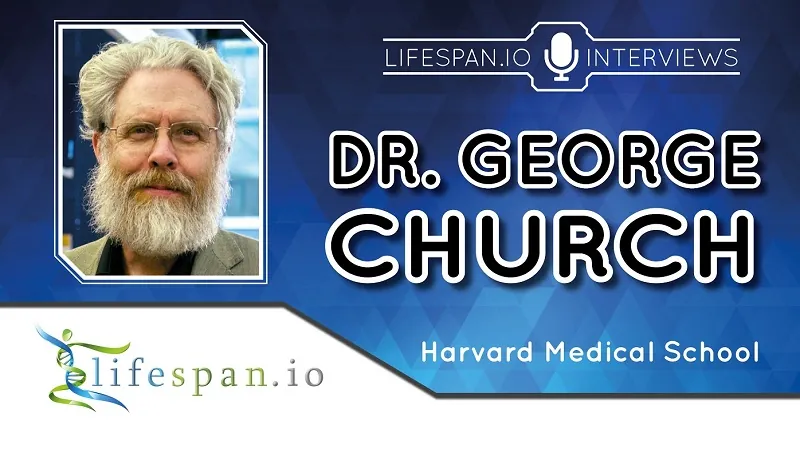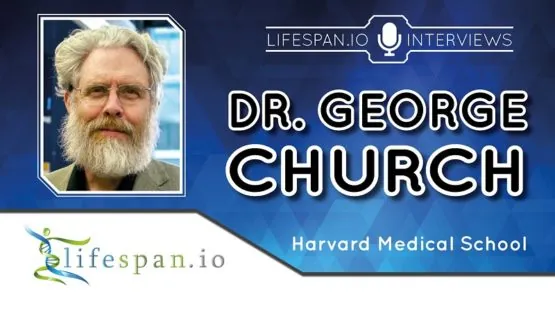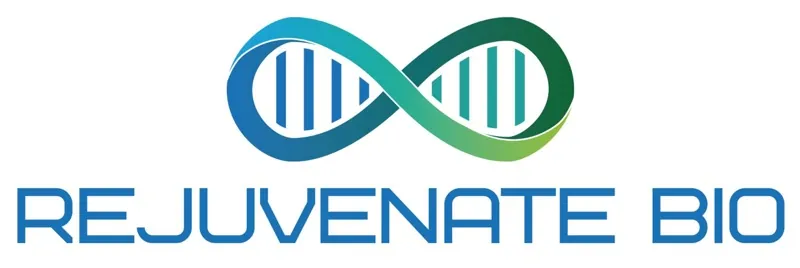Recently, we had the opportunity to interview Professor George Church, a well-known geneticist and rejuvenation expert. Prof. Church’s company, Rejuvenate Bio, will be launching a clinical trial to test a rejuvenation therapy in dogs this fall.
In your recent paper on enabling large-scale genome editing, you talked about manipulating endogenous transposable elements with the help of dead Cas9 base editors. At Ending Age-Related Diseases, Andrei Gudkov spoke about the super mutagenic phenotype that arises from the expression of LINE1 reverse transcriptase. In this context, he mentioned the possibility of the retrobiome (as he referred to it) being the main driver of all types of cellular damage, which is consequently improperly addressed due to immunosenescence. Do you share his views on the contribution of LINEs and SINEs in aging? If not, why?
Yes. That is one of the reasons why we explored the tech for editing of repeats. We are now extending this to the germline engineering of repeats.
Can you briefly explain why it is vital to overcome the delivery of multiple distinct gRNAs per cell in order to apply genome-editing techniques in genome-wide recoding or for the ultra-safe cells project spearheaded by Genome Project-write?
We published the first genomically recoded organism (GRO) in 2013 (E. coli). To do the same recoding (UAG to UAA) in mammalian cells would require edits. To do sufficient recoding to allow deletion of all (elongation factor or) tRNA genes related to the targeted pair of codons would require (7000 or) 180,000 edits.
In a recent article which you co-authored together with Alex Zhavoronkov, you talk about blockchain in healthcare. What could blockchain do for new and promising fields such as (pharmaco)genomics and personalized medicine?
The main opportunity I see is high privacy for (a) providing medical care, (b) avoiding serious Mendelian diseases by assistance with early stages of mate choice, (c) research for PMI and rare protective allleles (an ultra-private version of personalgenomes.org).
Could you describe which major challenges you see with genetic engineering in humans, where exactly we are today, and what scientific problems remain?
The many routes to GE humans include (a) CART cells already in clinical use, (b) xenotransplantation currently in preclinical primate trials, (c) germline (mostly mt-GE and two autosomal), and (d) hundreds of in vivo and ex vivo gene therapies approved and in development. Challenges include testing (long-term) safety and efficacy and bringing down the cost of GE in each of these cases.
How is it possible to minimize the off-target effects of CRISPR?
It is possible that off-target events have been overemphasized. With carefully vetted target sites, the off-target rates may be lower than spontaneous mutation rates — with few or none impacting tumor suppressor gene (TSG) exons. If there are cases where this matters, then ironically, somatic gene therapy on millions of cells is roughly a million times more likely to cause cancer than gene therapy on a single cell (for example, an egg, sperm or zygote) – due to the increased chance of damaging a TSG exon.
Why do you think rejuvenation biotechnology would involve gene therapies rather than pharmacological/periodic repair?
Finding specific targeting via small molecules is unpredictable and expensive. Developing small molecules that selectively affect a particular protein family member or isoform is challenging.
You have dozens of gene therapies to reverse aging in mice and also for Rejuvenate Bio in dogs; could you elaborate on what targets they work on and how they would work synergistically?
Pedro de Magalhaes first published the GenAge database in our lab in 2001. Today, it lists 305 human genes involved in aging. Since systemic delivery of DNA to all cells is not currently efficient, we look at the subset that is non-cell-autonomous. We are also aiming to hit all of the 9 major pathways of aging.
Do you believe that there is a good way to break down certain cellular waste products, such as lipofuscin?
An important hypothesis to test is if truly youthful cells (e.g. iPSCs) can remove waste products using human enzymes.
Is it possible to devise any genetic treatments to prevent a certain type of aging damage from occurring? If so, what would be an example of that?
Epigenetically young cells do periodic repair automatically. Maintaining the youthful levels of epigenetic factors seems like a fruitful approach to repair.
Could targeted gene therapies based on currently known favorable gene variants in humans substantially extend life? Genetic variants that extend life a lot are pretty rare, but do you still see supercentenarian genome studies as useful for the rest of us?
Probably not as useful as synthetic biology studies in animals and human organoids. Synbio is not limited by natural variation.
The world’s oldest person is almost always around 115-117 years old, and 98% of 110-year-olds are dead within 5 years. This extreme rate of mortality is not seen anywhere earlier in human life and suggests that there is a roadblock that any natural human genotypes can’t overcome. What do you think of this ‘barrier’ to human longevity?
The average lifespan of mice is 2 years. There was a clear barrier at 4 years until scientists made one last for 1,819 days. There is no law of physics or other reason for an upper barrier.





